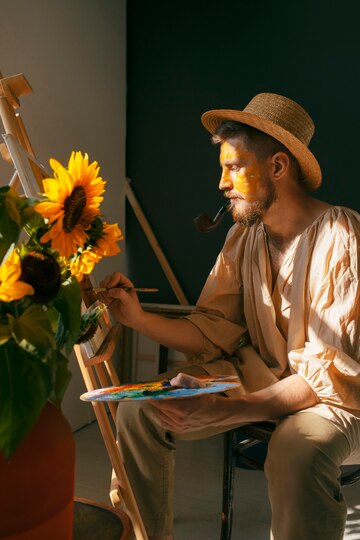Creativity is often thought of as an innate talent, but in reality, it is a skill that can be nurtured and developed through consistent practice. Whether you are a writer, artist, musician, or designer, having a structured creative practice can help you refine your craft, overcome creative blocks, and bring your ideas to life. This article explores the importance of creative practice and offers strategies to build and maintain one.
Why Creative Practice Matters
Engaging in a creative practice allows you to:
- Enhance Your Skills – The more you practice, the more you improve. Creativity is like a muscle; the more you use it, the stronger it gets.
- Overcome Creative Blocks – Regular practice helps you push past periods of stagnation and find new sources of inspiration.
- Develop Discipline – Creativity thrives on consistency. Establishing a routine makes it easier to produce work even when inspiration is lacking.
- Find Your Unique Voice – Exploring different techniques and experimenting with ideas helps you develop a personal style.
- Increase Confidence – The more you create, the more you trust your instincts and abilities.
Building a Creative Practice
1. Establish a Routine
Set aside dedicated time for creativity every day or several times a week. Whether it’s 15 minutes or two hours, consistency is key.
2. Create a Dedicated Space
Having a physical space for creative work can help signal to your brain that it’s time to focus. Whether it’s a desk, a studio, or a quiet corner, a designated space can improve productivity.
3. Experiment and Play
Creativity flourishes when you allow yourself to explore new ideas without judgment. Try different styles, techniques, or mediums to keep things fresh and exciting.
4. Set Goals
Having clear objectives can keep you motivated. Your goals might include finishing a painting, writing a short story, composing a song, or completing a photography project.
5. Seek Inspiration
Read books, visit art galleries, listen to music, watch films, or take nature walks. Inspiration can come from unexpected places, so expose yourself to diverse experiences.
6. Collaborate and Share
Engaging with a creative community can provide support, feedback, and new perspectives. Sharing your work, whether online or in person, can also boost confidence and motivation.
7. Embrace Mistakes
Failure is an essential part of the creative process. Learn from mistakes, adapt, and keep moving forward. Often, the best ideas emerge from unexpected challenges.
8. Practice Mindfulness
Being present in the moment can enhance your creative process. Techniques like meditation, journaling, and deep breathing can help clear mental clutter and open space for new ideas.
Overcoming Creative Blocks
Everyone faces creative blocks at some point. Here are a few strategies to break through them:
- Take a Break – Sometimes stepping away and returning with fresh eyes can make a big difference.
- Try a Different Medium – If you’re stuck in one creative form, switch to another. A writer might try painting, or a musician might experiment with poetry.
- Use Prompts and Challenges – Creative prompts and structured challenges can spark new ideas and force you out of a rut.
- Change Your Environment – A new setting can provide fresh inspiration.
- Trust the Process – Not every session will yield brilliant work, and that’s okay. Keep showing up, and the ideas will come.
Conclusion
Creative practice is about more than just producing work—it’s about fostering a mindset of exploration, growth, and persistence. By incorporating creativity into your daily life and building habits that support it, you can unlock your full potential and create with confidence. No matter where you are on your creative journey, the key is to keep practicing, stay curious, and enjoy the process.





